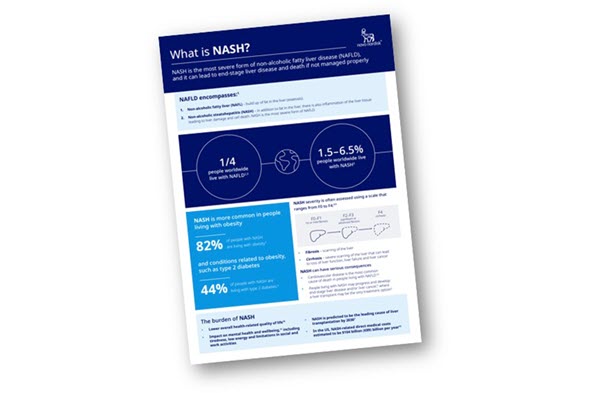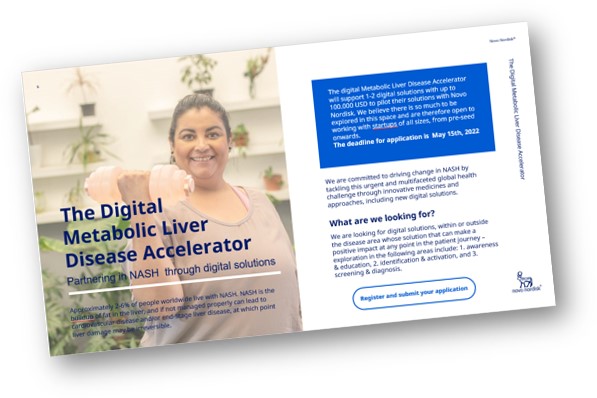We are inviting start-ups worldwide, developing digital solutions that can drive change for people living with NASH.
We are looking for digital solutions, within or outside the disease area whose solution that can make a positive impact at any point in the patient journey – exploration in the following areas include:
1. awareness & education
2. identification & activation
3. screening & referral
The Digital Metabolic Liver Disease Accelerator will support 1-2 digital solutions with up to 100.000 USD to pilot their solutions with Novo Nordisk. We believe there is so much to be explored in this space and are therefore open to working with startups of all sizes, from pre-seed onwards.
Approximately 2-6% of people worldwide live with NASH. NASH is the build-up of fat in the liver, and if not managed properly can lead to cardiovascular disease and/or end-stage liver disease, at which point liver damage may be irreversible.
While NASH is more common in people living with obesity and conditions related to obesity, such as type 2 diabetes, most people living with NASH, are unaware as few to no symptoms present themselves in its initial stage.
When they do occur, symptoms are often non-specific for example, abdominal pain, fatigue or weakness.
Lack of disease awareness amongst physicians, in addition to early-stage lack of symptoms, many people living with NASH remain unaware of their condition until it is too late. Furthermore, Payers and policy makers have limited, to no, insight on the disease burden for patients and society. As a result, there lacks a sense of urgency to diagnosis and treat NASH across all vital stakeholder groups.
NASH is known as a ‘silent disease’ because it may cause few to no symptoms in its initial stages and progressive damage can occur before symptoms appear. NASH is more common in people living with obesity and conditions related to obesity, such as type 2 diabetes. Despite this knowledge, few patients are identified as “at risk” and send for further testing, often resulting diagnosis once the disease has progressed into its late-stages.
NASH screening and referral pathways are not well defined and result in high disparity in clinical practice. Despite an established non-invasive screening score, FIB4, the adoption of the score remains low due to awareness, consensus and manual calculation. There is a need to increase the FIB4 usage and facilitate the connection between primary care providers (PCPs)/endocrinologists and specialists to optimize the referral process and lift the specialist bottleneck.

